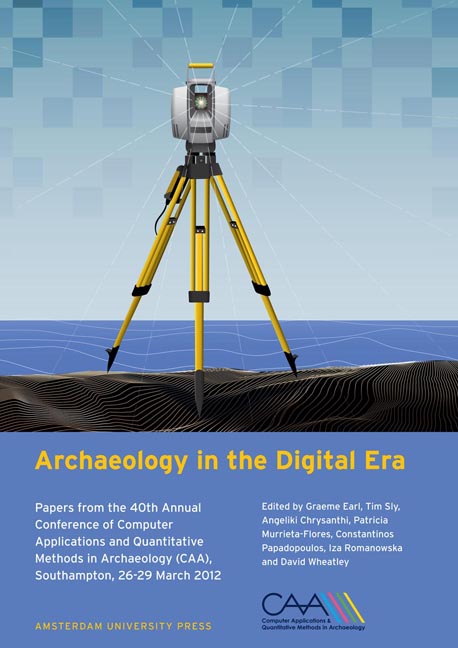 Archaeology in the Digital Era
Archaeology in the Digital Era Zooming Patterns Among the Scales: a Statistics Technique to Detect Spatial Patterns Among Settlements
Published online by Cambridge University Press: 16 February 2021
Summary
Abstract:
The present paper aims to offer an overview of the existing statistical approaches to settlement patterning in Archaeology by one multi-scalar method (Ripley's K function) and to show both problems and potentiality of such technique dealing with spatial data. I will use as case study the Iron Age I period archaeological sites located in the actual West Bank (or Cisjordan) in order to show how point pattern analysis can help us to detect spatial patterns and investigate if phenomena of attraction or repulsion among settlements are mainly related to the first or second order of effects. With the term first order of effects” I mean that the observations throughout a study area “vary from place toplace due to the changes in the underlying properties of the local environment” (O’Sullivan and Unwin, 2003, 79). The second order of effects, instead, is due to the local interaction between the observations. Therefore, I am going to investigate through this particular method how the environmental variables (first order of effects) and the direct interaction between the settlements themselves (second order of effects) can determine different spatial patterns (cluster, even or random distribution of settlements).
Keywords:
Spatial Analysis, Iron Age I Period, Southern Levant, Settlement Pattern, Landscape Archaeology, West Bank (Cisjordan)
Introduction
During the last years digital technologies have been used in Archaeology for the documentation, the management and the representation of archaeological data. A consequence of this phenomenon is the increasing popularity of Geographical Information Systems (GIS) as powerful tool for the organization and the visualization of archaeological data in relation with the correspondent spatial information, while less attention is paid to the application of spatial statistics for detecting specific patterns of such datasets.
Recently, however, GIS has been used by archaeologists not only for data management, but also for analysing data and their spatial references. Thus, researchers can detect particular patterns from archaeological data collected through archaeological surveys or excavations by carrying out statistical spatial analyses. It is important to point out that statistics and spatial analysis have the power to detect and explain even the most vague and complex aspects of the world (Shennan 1997,3). Researchers, by using statistics, can discern the presence or the absence of any pattern in the archaeological data, and detect the relationships between the spatial and the attribute datasets (Conolly and Lake 2006, 122).
- Type
- Chapter
- Information
- Archaeology in the Digital EraPapers from the 40th Annual Conference of Computer Applications and Quantitative Methods in Archaeology (CAA), Southampton, 26-29 March 2012, pp. 348 - 356Publisher: Amsterdam University PressPrint publication year: 2014


